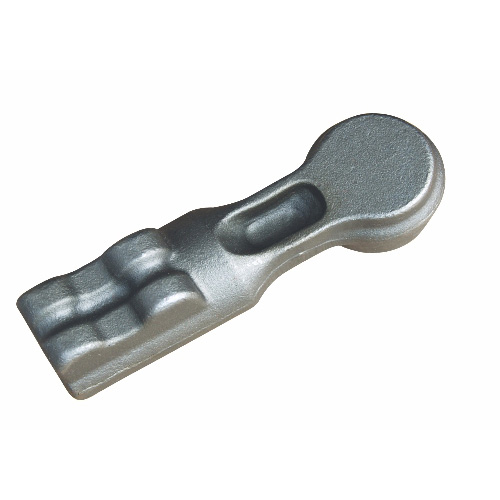Why is the forging process irreplaceable at present?
2022-09-19
Cars and some drive shafts must be forged, especially crankshaft components. Forging is the process by which block and bar steel materials are struck into shape. Forging by heating the billet above the recrystallization temperature is called hot forging. Hot forging makes the forging blank close to the shape of the final product and improves the mechanical properties of the forgings. Forging has higher quality and reliability than casting products because of the forging effect. The crankshaft, camshaft and sprocket gear which are required to have high strength and high rigidity are hot forging forgings. Automobile crankshaft is a shaft component in automobile engine that changes the linear motion of driving piston into rotary motion. The crankshaft is composed of the main shaft, piston connecting rod, connecting rod pin, balance weight and other parts fixed on the engine. According to the type and use requirements of the car, the car crankshaft has three cylinders in line, four cylinders in line, six cylinders in line, V-6 cylinders, V-8 cylinders and other forms, the shape is very complex.
The method of mass production of automobile crankshafts is to make castings or forgings close to the final shape of the crankshaft by casting or forging, and then finish them by machining to make the crankshaft. In recent years, the demand for high performance of automobile crankshafts has become more and more urgent, and the forging crankshafts with excellent mechanical properties have become the mainstream of automobile crankshafts, with increasing consumption. The performance requirements of the automobile crankshaft are high strength and high rigidity to make the engine efficient, quiet and low fuel consumption. At the same time, the crankshaft is also required to achieve lightweight.
In the past, the materials used for forging crankshafts of automobiles are generally heat treated materials of carbon steel and CR-MO steel (quenching and tempering treatment). After 1970s, in order to reduce the material cost, the development of non-quenched and tempered steel was promoted. Now, carbon steel with V (high fatigue strength steel) and carbon steel without V have become the mainstream steel used in automobile forging crankshafts.
In addition, in order to improve the fatigue strength of the crankshaft, high frequency quenching, soft nitriding and rolling processing are carried out on the dangerous parts of the crankshaft, such as the connecting rod pin and the round corner of the spindle, to improve the strength of these parts, which also shows the superiority of the forged crankshaft.
When forging the automobile crankshaft, the forging billet is generally heated to about 1200℃ for hot forging. In this way, small forging equipment can be used to impose small load and carry out good precision forging. When forging crankshafts, not only forging quality management, but also, from crankshaft material design, crankshaft shape design, steelmaking to forging system process must be strictly controlled. Crankshaft or axle products processed with bar are easy to appear forging cracking quality dissent.

The method of mass production of automobile crankshafts is to make castings or forgings close to the final shape of the crankshaft by casting or forging, and then finish them by machining to make the crankshaft. In recent years, the demand for high performance of automobile crankshafts has become more and more urgent, and the forging crankshafts with excellent mechanical properties have become the mainstream of automobile crankshafts, with increasing consumption. The performance requirements of the automobile crankshaft are high strength and high rigidity to make the engine efficient, quiet and low fuel consumption. At the same time, the crankshaft is also required to achieve lightweight.
In the past, the materials used for forging crankshafts of automobiles are generally heat treated materials of carbon steel and CR-MO steel (quenching and tempering treatment). After 1970s, in order to reduce the material cost, the development of non-quenched and tempered steel was promoted. Now, carbon steel with V (high fatigue strength steel) and carbon steel without V have become the mainstream steel used in automobile forging crankshafts.
In addition, in order to improve the fatigue strength of the crankshaft, high frequency quenching, soft nitriding and rolling processing are carried out on the dangerous parts of the crankshaft, such as the connecting rod pin and the round corner of the spindle, to improve the strength of these parts, which also shows the superiority of the forged crankshaft.
When forging the automobile crankshaft, the forging billet is generally heated to about 1200℃ for hot forging. In this way, small forging equipment can be used to impose small load and carry out good precision forging. When forging crankshafts, not only forging quality management, but also, from crankshaft material design, crankshaft shape design, steelmaking to forging system process must be strictly controlled. Crankshaft or axle products processed with bar are easy to appear forging cracking quality dissent.

X
We use cookies to offer you a better browsing experience, analyze site traffic and personalize content. By using this site, you agree to our use of cookies.
Privacy Policy



